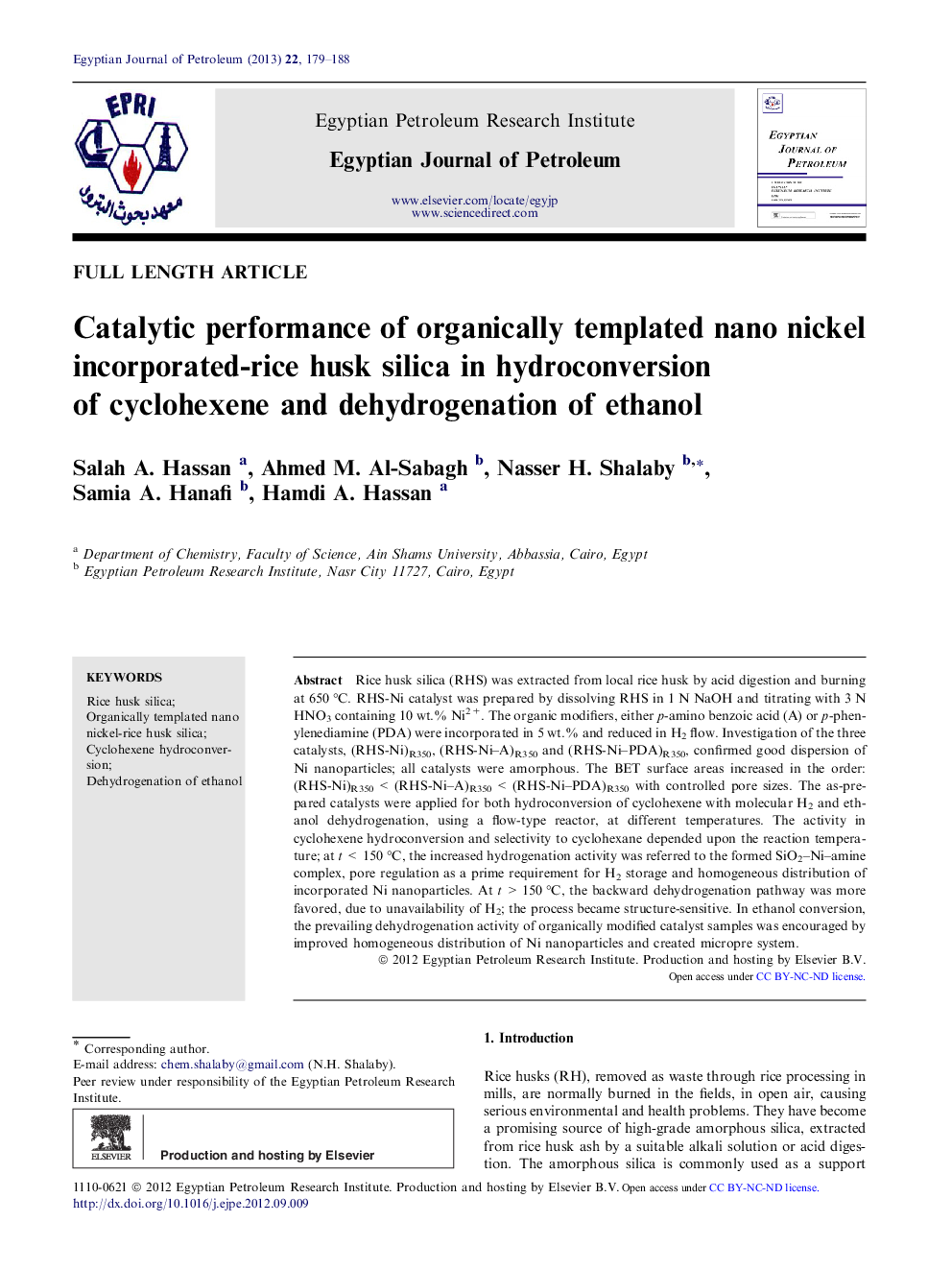| Article ID | Journal | Published Year | Pages | File Type |
|---|---|---|---|---|
| 1756980 | Egyptian Journal of Petroleum | 2013 | 10 Pages |
Rice husk silica (RHS) was extracted from local rice husk by acid digestion and burning at 650 °C. RHS-Ni catalyst was prepared by dissolving RHS in 1 N NaOH and titrating with 3 N HNO3 containing 10 wt.% Ni2+. The organic modifiers, either p-amino benzoic acid (A) or p-phenylenediamine (PDA) were incorporated in 5 wt.% and reduced in H2 flow. Investigation of the three catalysts, (RHS-Ni)R350, (RHS-Ni–A)R350 and (RHS-Ni–PDA)R350, confirmed good dispersion of Ni nanoparticles; all catalysts were amorphous. The BET surface areas increased in the order: (RHS-Ni)R350 < (RHS-Ni–A)R350 < (RHS-Ni–PDA)R350 with controlled pore sizes. The as-prepared catalysts were applied for both hydroconversion of cyclohexene with molecular H2 and ethanol dehydrogenation, using a flow-type reactor, at different temperatures. The activity in cyclohexene hydroconversion and selectivity to cyclohexane depended upon the reaction temperature; at t < 150 °C, the increased hydrogenation activity was referred to the formed SiO2–Ni–amine complex, pore regulation as a prime requirement for H2 storage and homogeneous distribution of incorporated Ni nanoparticles. At t > 150 °C, the backward dehydrogenation pathway was more favored, due to unavailability of H2; the process became structure-sensitive. In ethanol conversion, the prevailing dehydrogenation activity of organically modified catalyst samples was encouraged by improved homogeneous distribution of Ni nanoparticles and created micropre system.
